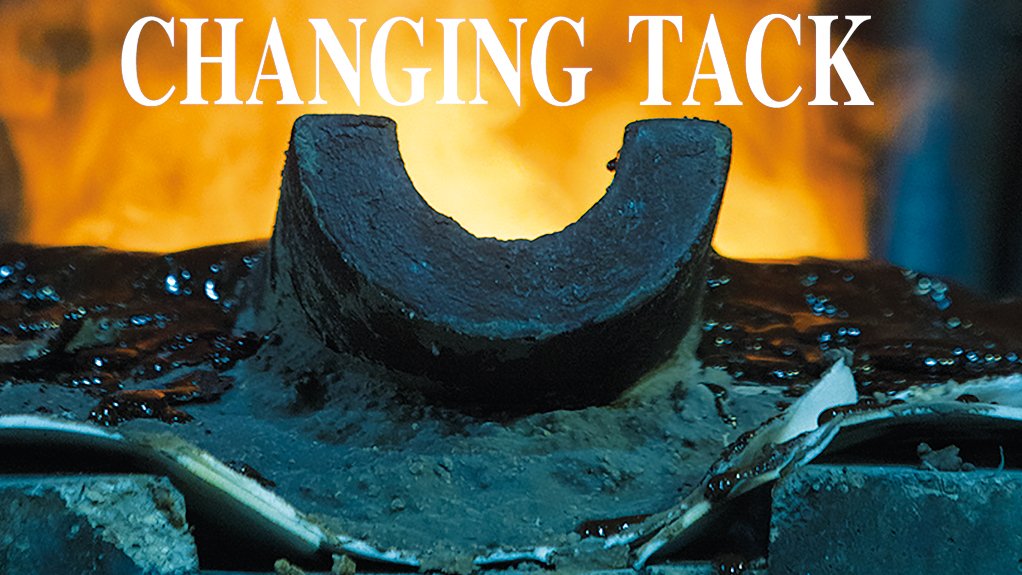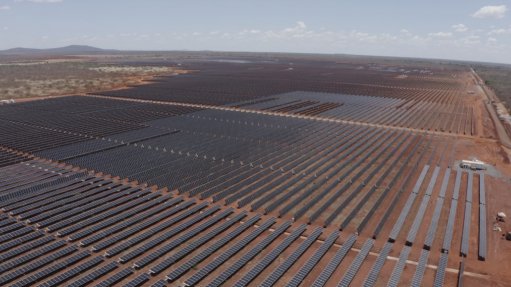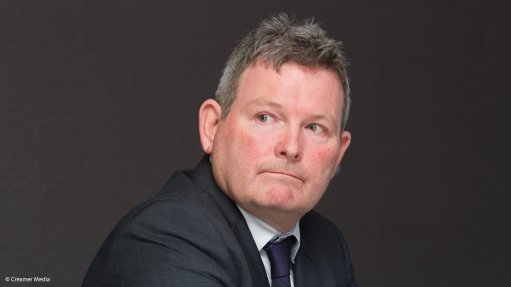South Deep rebase plan paving way for healthier economics, safer mining
JOHANNESBURG (miningweekly.com) – The South Deep gold mine, in Westonaria, Gauteng, is set to steadily ramp up production using a fully mechanised deep-level underground fleet, allowing for operations to be conducted at increasingly greater efficiencies, while ensuring improved personnel health and safety, as well as morale.
The only South African asset of gold major Gold Fields, South Deep has been struggling to meet its targets since it was acquired by the company in 2007, with various production targets having been tabled, only to be revised shortly thereafter.
Since its acquisition, the operation’s highest production target was 800 000 oz/y, set in 2014, but it was never realised. This was subsequently lowered to just under 700 000 oz/y and scrapped when the South Deep rebase plan was accepted.
In line with the rebase plan, South Deep will ramp up from a production target of 290 000 oz in 2017 to 315 000 oz in 2018, and then to 358 000 oz in 2019 and 500 000 oz in 2022, when steady-state production is set to standardise the volume of ore recovered as the mine progresses.
These long-term steps constitute the fundamental aspects of Gold Fields’ rebase plan for the mine to ensure its sustainability and future relevance in the changing global gold mining environment.
The rebase plan hinges on being completely redrawn in terms of production and cost targets, thereby enabling a revitalised mine management team to have complete freedom to start afresh and design South Deep’s operations plan and targets in line with what Gold Fields CEO Nick Holland describes as “genuinely achievable goals”.
“The plan is to be profitable in the long term,” he says.
The rebase plan was launched during a mine visit in March. Analysts expressed confidence in the plan, labelling it the most feasible operations plan produced by South Deep to date. The plan will be implemented by an experienced management team with extensive exposure to mechanised deep-level mining.
A major aspect of the rebase plan is the use of a fully mechanised underground fleet of vehicles.
With this increased fleet of machinery moving around underground, safety is a concern, especially for mineworkers travelling on foot. During the underground tour in March, the consistent implementation of safety practices by the underground crew was evident, and rules were strictly adhered to.
For example, although any vehicle has the right of way, personnel keep within the line of sight of a vehicle driver or operator, with personnel assisted by proximity sensors built into their headlamps to warn of any oncoming vehicle, even if it is not yet visible.
South Deep’s drive for full mechanisation is supported by a general perception in the gold mining industry that, without large-scale mechanisation, gold production using conventional mining methods will “sharply decline” towards 2019/20 and largely come to an end in about 2033, according to a Chamber of Mines (CoM) fact sheet titled 2017 Modernisation: Towards the Mine of Tomorrow.
The CoM explains that the local mining industry has relied on labour- intensive methods for more than 100 years, using physically demanding manual drilling, coupled with blasting and cleaning on a stop-start basis. This mining method is used predominantly on narrow reef and hard rock, especially in the gold sector, thereby resulting in steep gradients and increased levels of seismicity.
The factors leading to the possible demise of conventional gold mining include greater challenges in profitably mining lower-grade orebodies and in maintaining the safety of underground personnel. But modernisation with mechanisation will assist in achieving 24/7 operability and the ability to mine increasingly lower grade orebodies at a profit and improving safety.
As part of its fleet renewal strategy, South Deep has commissioned 58 Category 1 units over the past two years, bringing the total number of such units to 111.
A cornerstone of ensuring improved economics when using such an extensive deep-level fleet is maintenance, and this is where South Deep is forging ahead. The mine has built and commissioned an expansive underground workshop covering 40 000 m2 on 93 Level.
Commissioned late last year, this workshop houses several departments tasked with various aspects of equipment upkeep, ranging from scheduled servicing to complete overhauling.
South Deep has also joined forces with key original-equipment manufacturers Sandvik and Aard to assist with the skills development of engineering personnel who undertake work on the intricate and specialised equipment.
The workshop also features a stripping bay, where equipment is taken apart before undergoing major repair and rebuilding. Below-vehicle pits facilitate inspections, while overhead girder cranes assist in removing heavy and cumbersome components, such as engines and differentials. A paint-spray booth completes the process of recommissioning equipment to its original appearance.
The workshop is complemented by a components stockroom, which carries about R40-million worth of high-demand spares and service sundries.
This workshop enables South Deep to significantly improve its fleet availability, while reducing costs, compared with the conventional method of having to disassemble equipment before taking it to the surface for repair and overhauling.
South Deep is also placing much emphasis on improving morale. For instance, workshop personnel are treated to music played over a public address system and provided with improved ventilation and air conditioning, as well as plenty of room to manoeuvre in the maze of workshop tunnels and stations.
As South Deep is an ultradeep bulk mine, geotechnical considerations and the mine design are critical elements in successfully extracting the orebody. South Deep has, therefore, made several design and mine layout enhancements over the past two years.
The overall stiffness of regional pillars has been improved by reducing the span of corridors – from 240 m to 180 m – between regional pillars. This is enhanced by increasing the dimensions of crush pillars in the destress cuts from 10 m × 6 m to 8 m × 20 m.
South Deep VP Adriaan de Beer says the bigger pillars help contain seismicity levels in the mine to the extent that safety is significantly improved.
The mine has also moved from low-profile (2.2 m) to high-profile (5.5 m) destress mining, a transition that has taken two years to complete. This has enabled the mine to eliminate its previously inefficient and cumbersome multistep mining process, which included hangwall ripping to open excavations for longhole stoping equipment and to implement mechanised roofbolt installation.
Further, an aspect that helps to mitigate seismicity in the mine is the progress being made with regard to backfill operations, with the volume of backfill placed year-on-year increasing by 10%, or 373 m3. De Beer says there is greater installed capacity to backfill at an accelerated pace, adding that barricades have also been refined to cope with the large volumes of backfill used in mined-out areas.
The new backfilling operation is also much faster than the previous method, allowing for backfill to be placed in less than a week, compared with almost two weeks using the old system.
LOOKING AHEAD
Last year was a milestone year for South Deep, as many of the new initiatives started to yield results.
Holland says the mine became cash positive for the first time ever in 2016, generating a net cash flow of $12-million.
Besides a 47% increase in production to 290 000 oz, there was also a continuous improvement in the lead performance indicators.
Mine development increased from 4 701 m in 2015 to 6 933 m in 2016, with new mine development increasing by 9% year-on-year to 811 m.
Longhole stoping volumes also increased significantly, rising by 74% from 429 000 t in the 2015 financial year to 745 000 t in the 2016 financial year. This also resulted in a notable 28% – or 9 805 t per rig – increase in longhole stoping rig productivity during the year.
In terms of output plans, South Deep has completely redrawn its future operations plan and re-evaluated production targets, thereby laying the foundation for 70 years of steady-state production.
To achieve this, South Deep aims to reduce output from the Current Mine area while proportionally increasing production from the North of Wrench mining area as overall production ramps up to steady state, which is expected in 2022.
The mining areas north of the Wrench fault line are set to sustain South Deep only until about 2030, when it plans to begin mining two areas south of the Wrench fault – the South of Wrench (SoW) West and SoW East – with SoW West expected to supply the bulk of output to 2094.
Production from the Current Mine area and NoW is expected to be completely phased out by 2052.
At steady-state production, SoW West is set to produce 150 000 t/m, while SoW East will produce 80 000 t/m.
Once at steady-state production, South Deep is expected to produce about 500 000 oz/y at an all-in cost of about R400 000/kg, or $900/oz, based on current calculations.
Comments
Press Office
Announcements
What's On
Subscribe to improve your user experience...
Option 1 (equivalent of R125 a month):
Receive a weekly copy of Creamer Media's Engineering News & Mining Weekly magazine
(print copy for those in South Africa and e-magazine for those outside of South Africa)
Receive daily email newsletters
Access to full search results
Access archive of magazine back copies
Access to Projects in Progress
Access to ONE Research Report of your choice in PDF format
Option 2 (equivalent of R375 a month):
All benefits from Option 1
PLUS
Access to Creamer Media's Research Channel Africa for ALL Research Reports, in PDF format, on various industrial and mining sectors
including Electricity; Water; Energy Transition; Hydrogen; Roads, Rail and Ports; Coal; Gold; Platinum; Battery Metals; etc.
Already a subscriber?
Forgotten your password?
Receive weekly copy of Creamer Media's Engineering News & Mining Weekly magazine (print copy for those in South Africa and e-magazine for those outside of South Africa)
➕
Recieve daily email newsletters
➕
Access to full search results
➕
Access archive of magazine back copies
➕
Access to Projects in Progress
➕
Access to ONE Research Report of your choice in PDF format
RESEARCH CHANNEL AFRICA
R4500 (equivalent of R375 a month)
SUBSCRIBEAll benefits from Option 1
➕
Access to Creamer Media's Research Channel Africa for ALL Research Reports on various industrial and mining sectors, in PDF format, including on:
Electricity
➕
Water
➕
Energy Transition
➕
Hydrogen
➕
Roads, Rail and Ports
➕
Coal
➕
Gold
➕
Platinum
➕
Battery Metals
➕
etc.
Receive all benefits from Option 1 or Option 2 delivered to numerous people at your company
➕
Multiple User names and Passwords for simultaneous log-ins
➕
Intranet integration access to all in your organisation





















